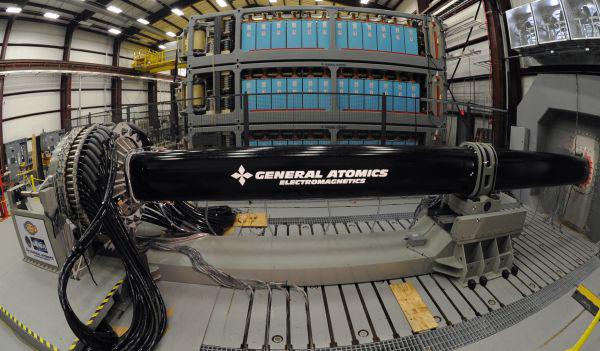U.S. Navy to Unveil 'Game-Changing' Lethal Railgun
The U.S. Navy will soon demonstrate a new electromagnetic railgun launcher, which can launch a 23-pound projectile at speeds topping Mach 7.
It has been a decade in the making, and soon the U.S. Navy will demonstrate what Navy leaders have lauded as game changing technology.
This summer in San Diego, the Navy will unveil its much-anticipated electromagnetic railgun launcher, which can launch a 23-pound projectile at speeds topping Mach 7. That’s 5,328.45 mph.
“The electromagnetic railgun represents an incredible new offensive capability for the U.S. Navy,” Rear Adm. Bryant Fuller, USN, the service’s chief engineer, says in a statement. “This capability will allow us to effectively counter a wide range of threats at a relatively low cost, while keeping our ships and sailors safer by removing the need to carry as many high-explosive weapons.”
Sailors will mount a for-display system aboard the Joint High Speed Vessel (JHSV) Millinocket with the first at-sea test slated for sometime in fiscal 2016, Christopher Johnson, Naval Sea Systems Command spokesman, says. The Navy will test the single-shot capability of one of its two prototypes, made by San Diego-based General Atomics and BAE Systems.
The system is less expensive than current onboard weapons systems, officials say, costing about $25,000 per projectile instead of $500,000 to $1.5 million for conventional missiles. Many of the Navy’s fleet of combat surface ships have between 96 and 122 vertical firing tubes for weapons such as Tomahawks and other missiles, Johnson says.
Because JHSVs like the Millinocket are noncombatants, no plan exists to permanently install the railgun on the vessels. A final decision has not been made as to which ship classes will receive a fully operational railgun.
“Regarding future options, we have been examining potential ship options since the beginning of the effort,” Johnson says. “We have conducted several in-depth feasibility studies with a variety of ships in the U.S. inventory. We are designing the system using open architecture software and modular building-block approaches to provide flexibility for the physical installation. A final decision has not been made, nor has a time line been determined.”
The railgun technology uses an electromagnetic force—known as the Lorenz Force—to hurl a projectile between two conductive rails. Projectiles will move at such high velocities they can travel farther than conventional guns. It maintains enough kinetic energy, officials explain, that projectiles do not require high explosive payloads.
“Energetic weapons, such as EM railguns, are the future of naval combat,” Rear Adm. Matthew Klunder, USN, the chief of naval research, says in a statement. “The U.S. Navy is at the forefront of this game-changing technology.”
The Office of Naval Research launched a prototype program in 2005 with an initial investment of $250 million committed through 2011. The Navy anticipates spending about that much more by 2017.




Comments